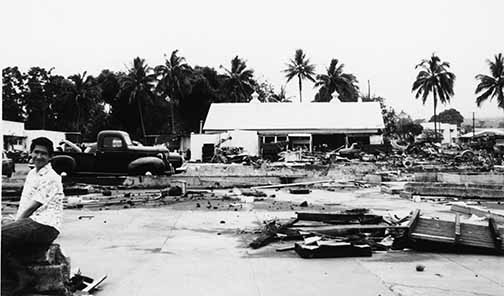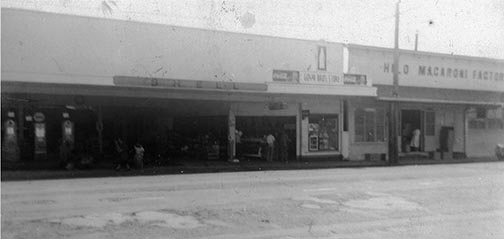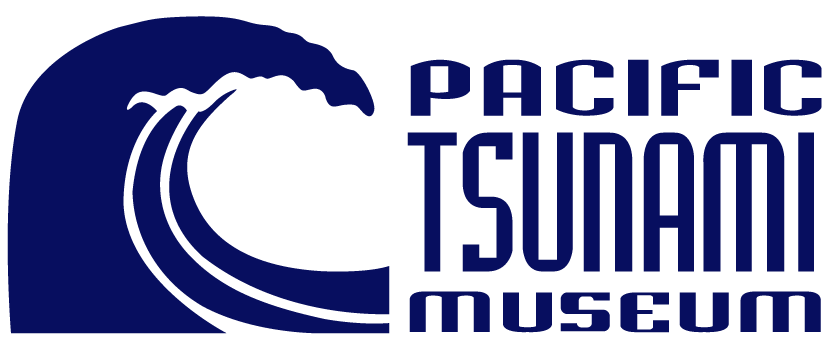Survivor Narratives: 1960
My Dad and the 1960 Tsunami
An essay written by Isaac Goya about his dad, Tom Goya
In 1960, my Dad, Tom Goya, was in high school and lived with his family near Lyman Museum. My Grandpa and his family owned and ran Goya Brothers Service Station, May’s Fountain, and Ellen’s Liquors at the corner of Bishop Street and Kamehameha Avenue in Hilo.

On May 22, 1960 an earthquake in South America generated a tsunami, and a statewide alert was issued at about 6:45 p.m. My Dad and his family went down to the family business to move the expensive merchandise and important papers to the second floor storage room. At 11:00 p.m., the police evacuated the area as the tsunami was predicted to hit around midnight. My Dad and his family went home to sleep.
In the early hours of May 23, 1960 the tsunami waves hit. At about 1:00 a.m. a strange sound woke up Dad and his family. The huge third wave crashed into Hilo Bay with a large roaring sound, ripping metal, accompanied by loud booms from blown electrical transformers. The power went out. The house was dark, and everyone was in shock.
At dawn, my Grandpa, my Dad, and my Uncle went by car to a spot close to the location of present-day downtown Burger King. One could not drive any closer to the Bay front because there was a 20-foot pile of debris all along Hilo Bay.
They climbed up the pile and looked over and saw only a vast open space where the houses and businesses of downtown Hilo had been. The only building my Dad could see standing was the Hilo Theater. Dad could not believe his eyes; he was totally in shock.

They walked to the location of the family business, and all that was left was a flat cement slab that looked freshly poured. The waves had sandblasted off every speck of oil and grease. There was no sign of the buildings or their contents. Everything had been destroyed. They found the store’s 2000-pound safe on Bayfront where the Iron Works building is today. My Dad said his Uncle remembers that it was his job to iron the money to dry and save it. They found liquor bottles, never opened, that were nearly full of sand. They could not believe the force of the waves could put sand into a closed and sealed bottle. (The Museum would love to have one of these bottles to display if anyone has one!)
The most memorable possession my Dad says he lost was an autographed baseball signed by Babe Ruth that was on display in the soda fountain. He will always remember the old fountain. All the teenagers hung out there and had a good time.
The sound of the third wave and the sight of the pile of rubble and the vast destruction when they climbed over the rubbish is something my Dad will always remember. He still thinks about the 61 people that died that night and the 43 that were injured.
